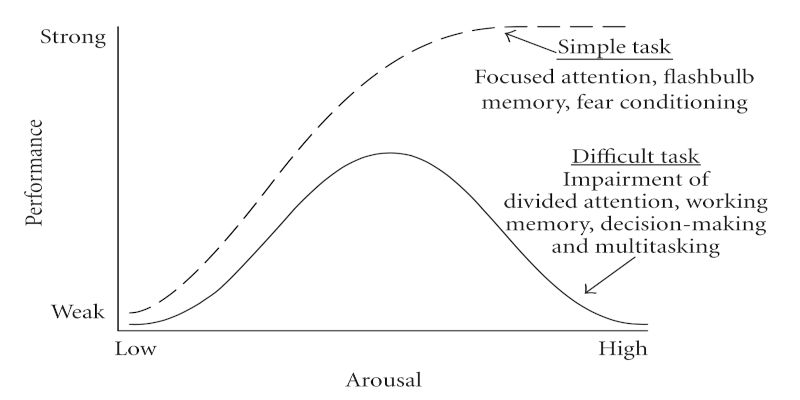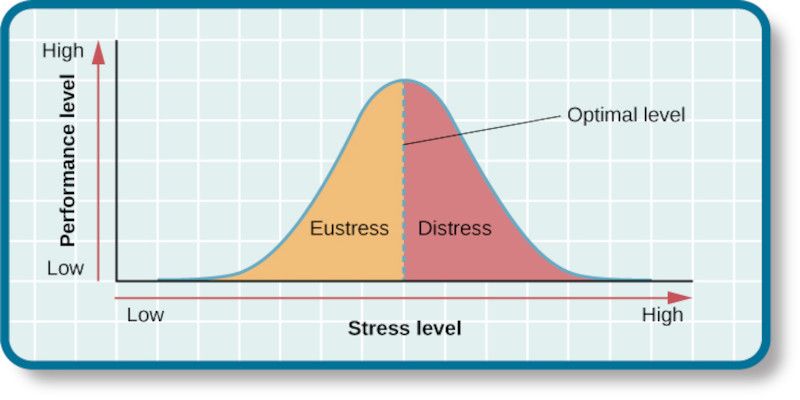Table of Contents
ToggleWhy is it that going through painful experiences, and hardships often makes us stronger in the end?
That’s because these uncomfortable feelings spur us on to improve. Without challenge, there is no growth.
Let me explain why challenge leads to growth.
Why do things need to be dangerous and challenging in order to grow?

Danger gives us a reason to improve
Danger is one of the few reasons that gives us an actual reason to grow in skill and competence as human beings.
We can envision danger as something that threatens our survival as an individual, which makes it a top priority to lessen those dangers in life as much as possible. If there is no danger, then why would we even bother to improve on valuable life skills?
Let’s say for example that nobody in society was violent and aggressive. Then why would we even bother to learn self-defense and martial arts?
Let us assume for a second that there isn’t any danger in driving a car. That there are no car crashes, no car breakdowns, and that it’s perfectly safe and sound. Why would we bother to learn the rules and practice our driving skills to make driving an automatic behavior?
Without challenge, there can be no growth

If it doesn’t challenge you, it doesn’t change you.
You can’t grow if you stay in your comfort zone all the time, which means only performing the skills you’re already good and experienced at. This means you won’t improve as a person or get any better at other priceless skills for that matter.
There’s this quote, “you either win or learn in life.” And I think this is most certainly true.
Things need to be tough and challenging to get better. I would even go as far as to say that we learn the most from our failures since we’re inclined to learn from our mistakes to prevent experiencing that same pain again.
So challenge yourself and learn something new every day as long as you’re capable. Memorizing something new doesn’t always have to be a practical thing. It can also be acquiring another way of thinking, or doing something you’ve never done before to gain new experiences.
A certain amount of risk leads to growth

Things being challenging and slightly dangerous is where you should try to aim. Where you should try to be and stay. This is the sweet spot to grow and learn as effectively and quickly as possible.
Why? Because the skills and world you already know provide just enough safety. But there’s also just enough of the unknown, and unfamiliarity that forces you to grow.
The unknown is the skills you don’t yet possess, and the parts of the world which are still a bit undiscovered to you. Which is why it’s both a bit dangerous and difficult.
Let’s use the previous example that we exploited at the beginning of this post to explain why we improve the most when there’s a bit of danger and challenge involved.
When kids are climbing trees without the protection of a safety rope and harness, the adults usually see this as purely defiant in addition to dangerous acts.
However, there is real utility in this dangerous form of play. The kids are improving their agility and learning what their physical limitations and capabilities are. This is not to say that there is no real danger in climbing trees without any safety gear. (Depending on how high they are climbing, of course.)
Why being overprotective or overly safe leads to stagnation or regression of growth
Sometimes, we so desperately try to protect what we love that we don’t realize we’re harming it by being overprotective. Preventing it from growing into something better.
Some parents for example are overprotective of their children. Some desperately try to protect and hide them from all the dangers of the world. No wonder, since this existence can be dangerous and even painful. The thing is, whether we want to admit it or not, the world is not safe. Even though it’s in my opinion the safest it’s ever been.
Atrocious events such as murder still happen, some people steal, and some folks are out there trying to hurt other people as much as possible because it gives them pleasure. And, to the great dislike of most parents, you can’t always be around your children, no matter how much they would want to.
Furthermore, being overprotective of your child will prevent them from learning the required life skills and lessons to be safer in the end. Even though we’re never completely safe.
If a kid has never experienced someone trying to take advantage of them in some way, then how is it supposed to know and recognize when such a situation inevitably arises? And if the child can’t acknowledge a dangerous situation, then how is it supposed to protect itself from it?

Another, perhaps more relatable, example is one most of us experienced ourselves at some point during our lives.
The dreaded moment when you were, or perhaps still are in high school and your teacher asks or most probably, demands you to give a presentation in front of your class. Or, god forbid, in front of all of your age-related peers in school.
Most of us experience anxiety at such moments. Thoughts such as, “Will I stutter”, “What if I look foolish”, “What if they laugh at me” and so on keep flowing through our heads in that particular instance.

Which by the way is not helpful because while a certain amount of nervousness can enhance performance, being overly anxious does not improve our execution. Being too stressed decreases our effectiveness.
However, to learn how to deliver a decent presentation we need to prepare, practice, and do it. There is no other way to improve your presentation skills. There are no shortcuts in life that are worth taking.

You will forever feel anxious about giving a presentation if you don’t practice. And while not being able to present a decent presentation doesn’t seem like a big deal, the same thing applies to all the other skills in life as well.
You need to voluntarily confront and challenge things that you’re afraid of, or situations that are currently unknown to you, to grow.
Frequently Asked Questions (FAQ)
What is a challenge?

Challenge can be defined as an invitation to someone else to participate in a competitive situation.
This competition can be verbal, or even a physical fight to decide who is better in terms of capability or power.
Why is there no growth without challenge?

The quote “without challenge, there is no growth” is appropriate here.
If there is no challenge, then what’s the motivator to grow as a person? Why should we bother putting in the time and effort that improving requires if our personal development has no upsides, or if it wasn’t necessary?
That’s why we need a challenge to push us to better ourselves. Because it allows us to prevent future pain from failing or making mistakes.
Why no challenge leads to no change
A challenging situation does lead to change because it forces us to think, learn, and adapt to find the best possible answer or solution to a problem.
Conclusion

If it doesn’t challenge you, it doesn’t change you.
Children have figured out, or rather act out naturally, what we adults have lost throughout our lives of “growing up.”
They challenge themselves, often accompanied by a bit of danger in addition to challenging play, to grow as human beings and to develop the necessary skills to succeed and survive the hardships in life. While we adults deem such behavior as irresponsible and dangerous.
Adults for the matter are often less brave than kids. Most of us are content staying in our little safe cocoon with no chance of developing new skills or sharpening the abilities that we already possess. No, most of us are content settling for mediocrity.
So in short, get out of your comfort zone to acquire, and practice new abilities.




1 thought on “How challenge leads to growth”
Comments are closed.